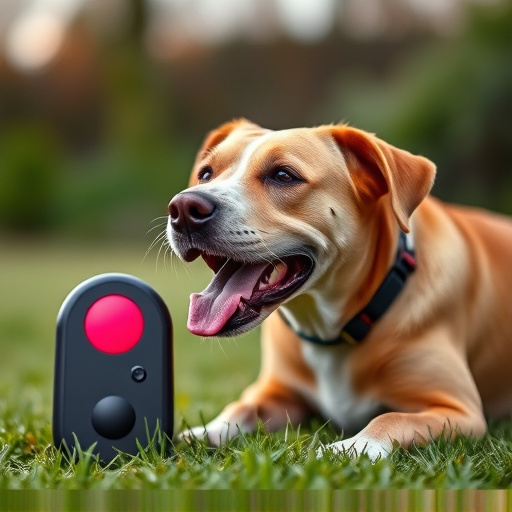Electronic pet deterrents, targeting dog behavior with inaudible sonic frequencies, must adhere to Electronic Pet Deterrent Safety Regulations for both human and animal protection. Stricte compliance by manufacturers ensures safe, effective devices that control dog behavior without harm. Responsible use requires research, local guideline adherence, species-specific equipment placement, monitoring, and integration with training or signage for a harmonious community-pet coexistence.
In many urban areas, managing dog populations and ensuring neighborly coexistence is a growing concern. This has led to the increased use of electronic pet deterrents, particularly sonic equipment, designed to control canine behavior without traditional physical barriers. Understanding these devices’ effectiveness and safety is paramount. This comprehensive overview explores electronic pet deterrents, delving into their mechanisms, the impact of safety regulations, and best practices for implementation while prioritizing both animal welfare and community harmony.
- Understanding Electronic Pet Deterrents: A Comprehensive Overview
- Safety Regulations and Their Impact on Neighborhood Dog Control Equipment
- Best Practices for Implementing Sonic Dog Deterrents: Ensuring Effectiveness and Animal Welfare
Understanding Electronic Pet Deterrents: A Comprehensive Overview
Electronic pet deterrents, often referred to as sonic equipment, are designed to modify animal behavior through various sensory stimuli, primarily sound and sometimes scent. These devices emit specific frequencies or sounds that can be inaudible to humans but are effective in startling or disturbing animals like dogs. While they’re commonly used for keeping pets within defined boundaries, their safety and effectiveness are subjects of ongoing debate.
It’s crucial to understand that not all electronic pet deterrents are created equal, and their performance can vary widely based on design, frequency range, and power output. Moreover, Electronic Pet Deterrent Safety Regulations play a significant role in ensuring these devices don’t cause harm to animals or humans. These regulations often dictate the specific frequencies and decibel levels that can be emitted, aiming to prevent any adverse effects on hearing and overall well-being. As with any technology involving animal behavior modification, responsible use requires thorough research and adherence to local guidelines.
Safety Regulations and Their Impact on Neighborhood Dog Control Equipment
Neighborhood dog control equipment, especially those employing electronic pet deterrents, operate within a strict framework of safety regulations to protect both animals and humans. These regulations are designed to ensure that such devices do not cause physical harm or distress to dogs or people in the vicinity. The guidelines cover various aspects, including the frequency and intensity of sound emissions, ensuring they remain non-lethal and within safe limits. Manufacturers must adhere to these standards to certify their products as safe for use.
The impact of these safety regulations is profound. They encourage the development of more sophisticated and precise electronic pet deterrents, which can effectively control dog behavior without resorting to harmful methods. By setting clear boundaries on sound pressure levels and ensuring proper testing, regulators promote the responsible use of such equipment, fostering safer and more harmonious coexistence between dogs and their communities.
Best Practices for Implementing Sonic Dog Deterrents: Ensuring Effectiveness and Animal Welfare
When implementing sonic dog deterrents, adhering to best practices is crucial for both effectiveness and animal welfare. Firstly, ensure the device is approved by relevant authorities and complies with local Electronic Pet Deterrent Safety Regulations. This guarantees that the product is safe and humane. Secondly, carefully select a device designed specifically for dogs, as not all electronic deterrents are effective on different animal species. Proper placement is key; strategically position the device near areas where dogs frequently enter or congregate, while avoiding sensitivity to other animals or humans. Regular maintenance, such as cleaning sensors and replacing batteries, is essential for optimal performance. Additionally, familiarize yourself with the operating range and frequency settings to ensure the sound is audible yet non-distressing to canine senses.
To avoid potential harm, never leave the device active when pets aren’t present in the area. Responsible use involves activating it only when necessary, allowing dogs time to adjust to the sound without constant exposure. Monitor for any adverse reactions from dogs and consult with a veterinarian if concerns arise. Regularly reviewing and updating your neighborhood dog control strategy, including alternative methods like training programs or signage, can contribute to a more holistic and effective solution that respects both pet owners’ needs and animal welfare standards.
In conclusion, while electronic pet deterrents like sonic equipment show promise in neighborhood dog control, it’s crucial to balance effectiveness with animal welfare. By adhering to safety regulations and best practices highlighted in this article, communities can responsibly utilize these tools to manage canine behavior without causing harm. Responsible implementation of Electronic Pet Deterrents (EPDs), guided by up-to-date Safety Regulations, is key to fostering harmonious coexistence between pets, owners, and neighbors.
